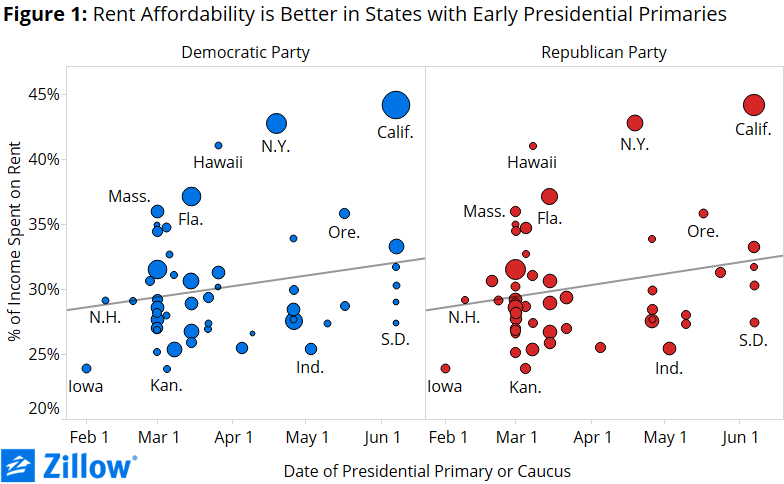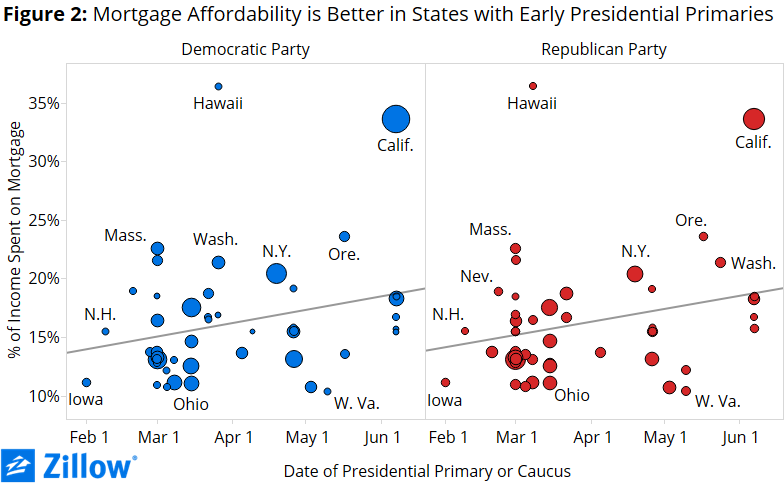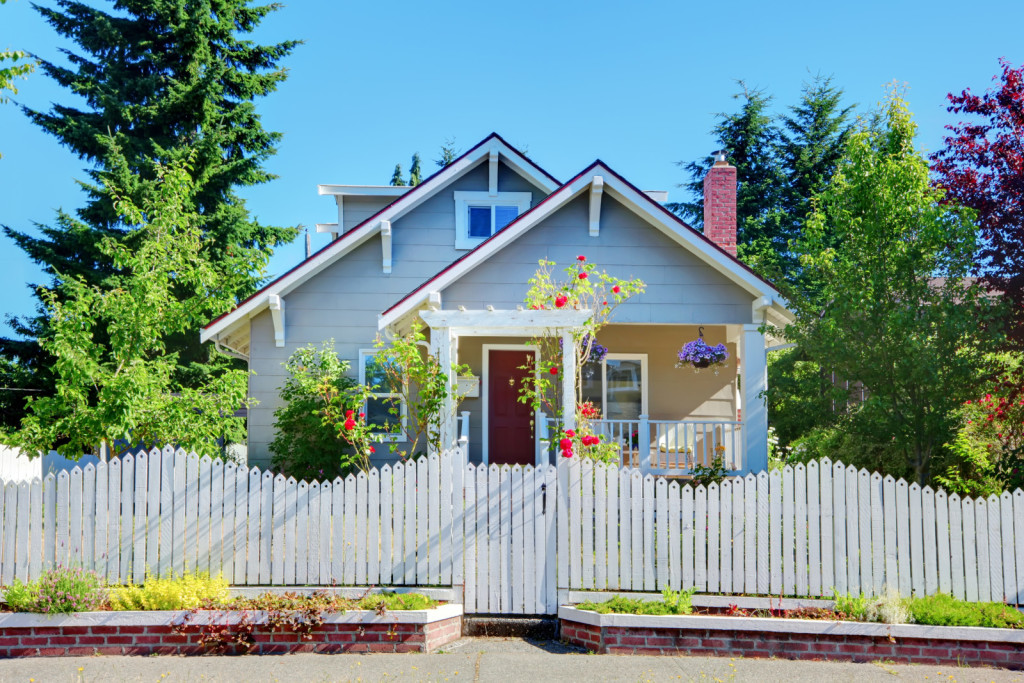Why Presidential Candidates Aren’t Talking About Housing Affordability (Yet)
Housing affordability has not been a main issue, so far, in this presidential election cycle. There are several good reasons why, but among the easiest potential explanations is this: Candidates have simply not yet really begun campaigning in the states where housing affordability is at its worst.
- The average share of income spent on rent in the first four states to vote is 28 percent, compared to 33 percent for the six states that vote on the last day of primaries.
- The average share of income spent on a mortgage payment in the first four states to vote is 15 percent, compared to about 20 percent for the six states that vote last.
Housing affordability has not been a main issue, so far, in this presidential election cycle. There are several good reasons why, but among the easiest potential explanations is this: Candidates have simply not yet really begun campaigning in the states where housing affordability is at its worst.
Rent and mortgage affordability – defined as the share of an area’s median income needed to afford the typical mortgage payment or rent in a given area – tend to be less pressing challenges in the states that vote early in the primary season and have a disproportionate voice in the nominating process.
 Of course, simple timing isn’t the only reason housing hasn’t been the touchstone issue it was in prior election seasons. Housing policy tends to be more prominent in state and local campaigns, and presidential candidates have thus far chosen to focus more on security and social issues. But while it may make sense for candidates to focus on other issues early in the primary campaign, it’s likely these concerns will garner more attention as the primary season advances and a larger share of the primary electorate is grappling with housing affordability problems.
Of course, simple timing isn’t the only reason housing hasn’t been the touchstone issue it was in prior election seasons. Housing policy tends to be more prominent in state and local campaigns, and presidential candidates have thus far chosen to focus more on security and social issues. But while it may make sense for candidates to focus on other issues early in the primary campaign, it’s likely these concerns will garner more attention as the primary season advances and a larger share of the primary electorate is grappling with housing affordability problems.
 The average share of income spent on rent in the first four states to vote (Iowa, New Hampshire, Nevada and South Carolina) is 28 percent, compared to 33 percent for the six states (California, New Jersey, New Mexico, Montana and the Dakotas) that vote June 7, the last day of primaries (figure 1). The average share of income spent on a mortgage payment in the first four states to vote is 15 percent, compared to about 20 percent for the six that vote last (figure 2). Dot sizes in figures 1 and 2 reflect the share of each party’s convention delegates awarded in each state’s primary or caucus.
The average share of income spent on rent in the first four states to vote (Iowa, New Hampshire, Nevada and South Carolina) is 28 percent, compared to 33 percent for the six states (California, New Jersey, New Mexico, Montana and the Dakotas) that vote June 7, the last day of primaries (figure 1). The average share of income spent on a mortgage payment in the first four states to vote is 15 percent, compared to about 20 percent for the six that vote last (figure 2). Dot sizes in figures 1 and 2 reflect the share of each party’s convention delegates awarded in each state’s primary or caucus.
Methodology
For both major political parties, we plot the relationship between the date of the state’s presidential primary or caucus, and the share of a typical household’s income that goes to a monthly rental or mortgage payment (rental affordability and mortgage affordability, respectively), weighting each state by the share of each party’s convention delegates awarded in the state. For both mortgage and rent affordability, the coefficients associated with the primary date is positive and statistically significant in a weighted OLS regression using the share of convention delegates awarded by the state as weights.


